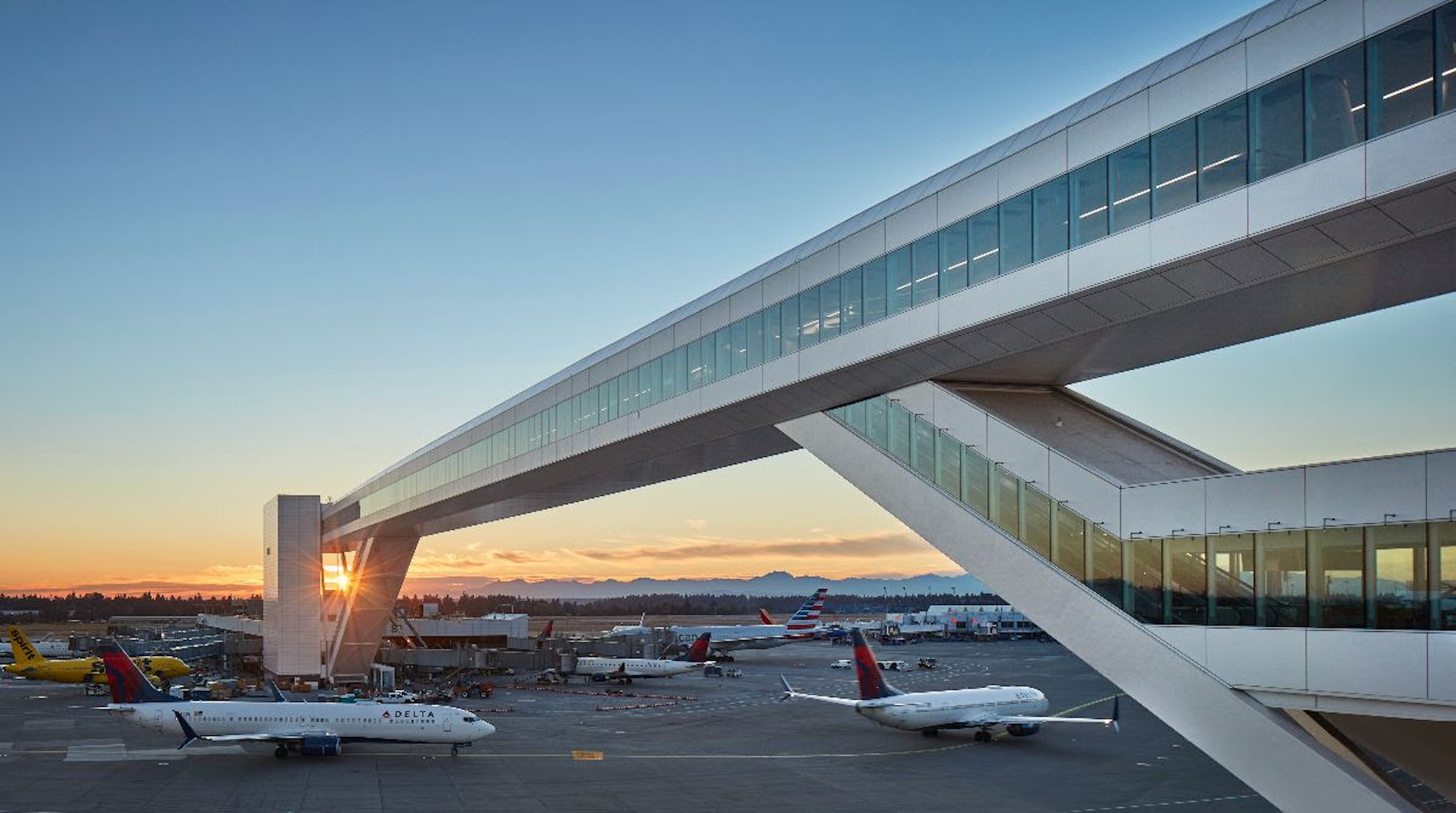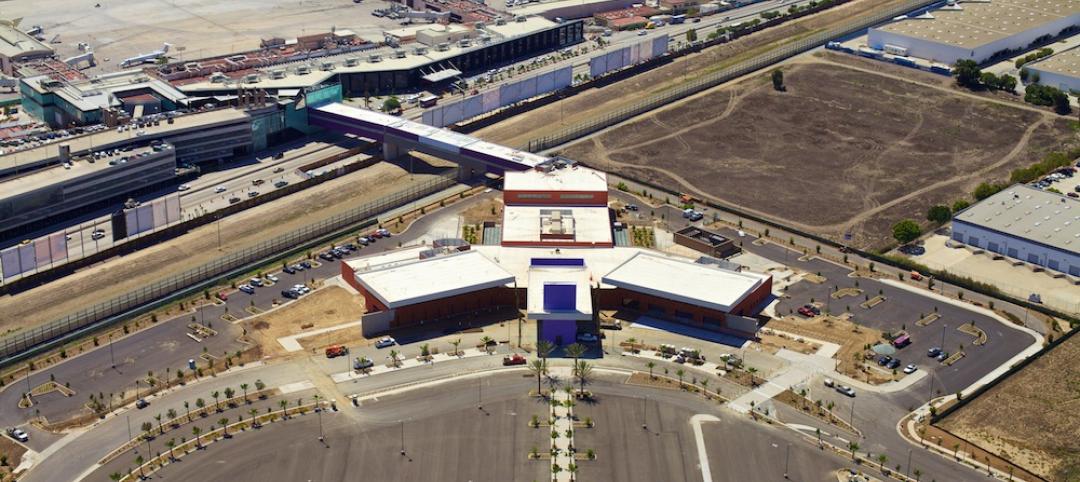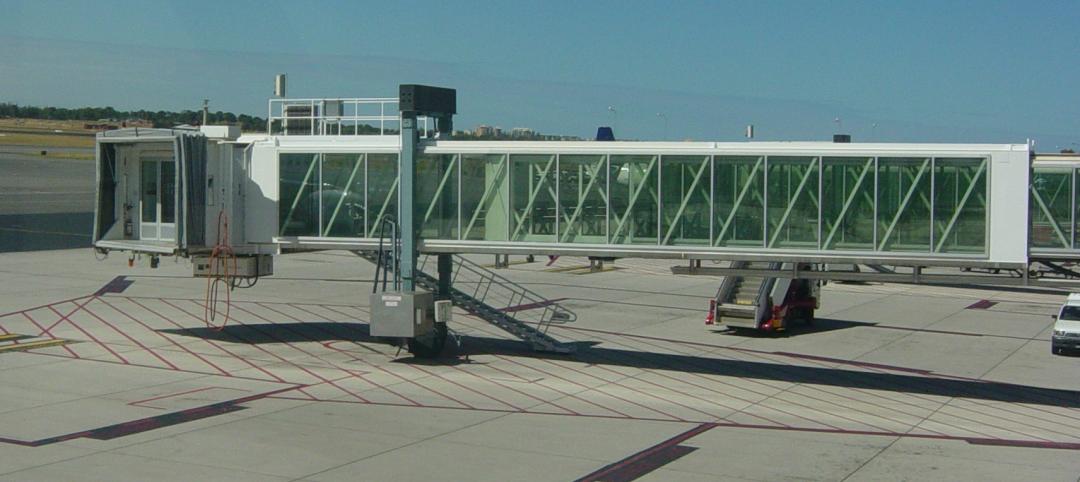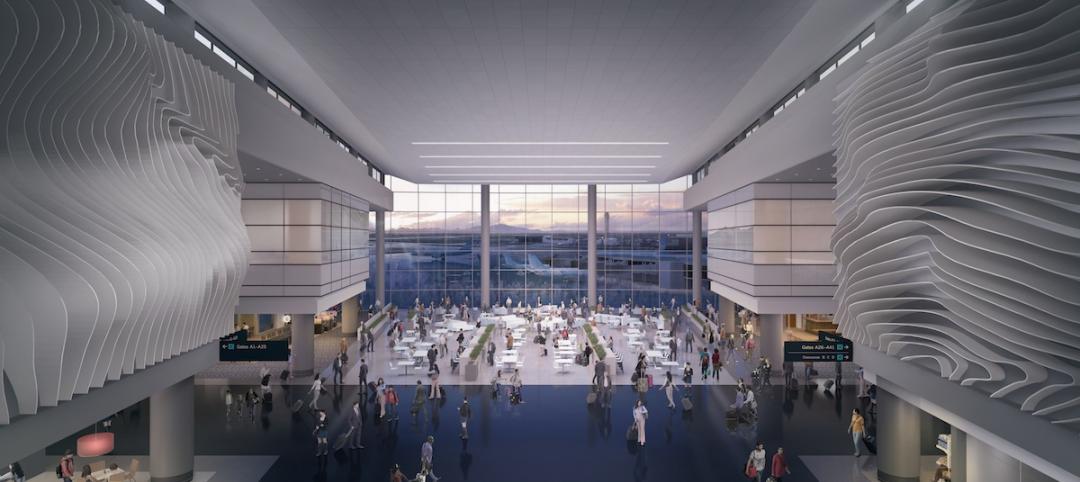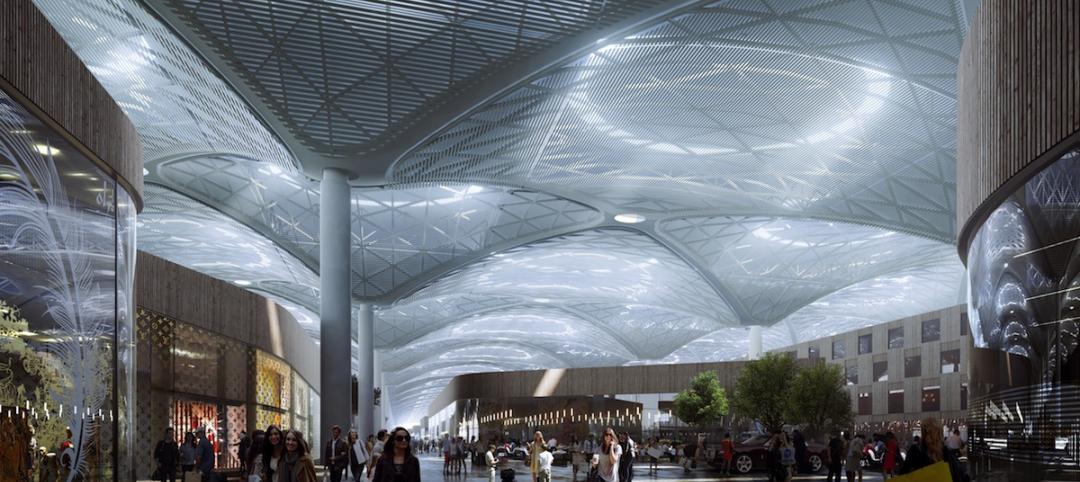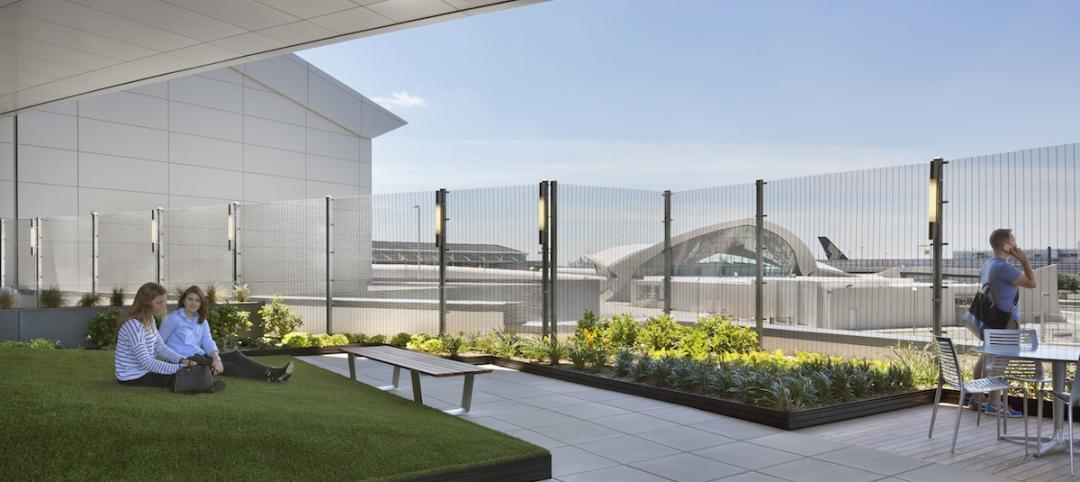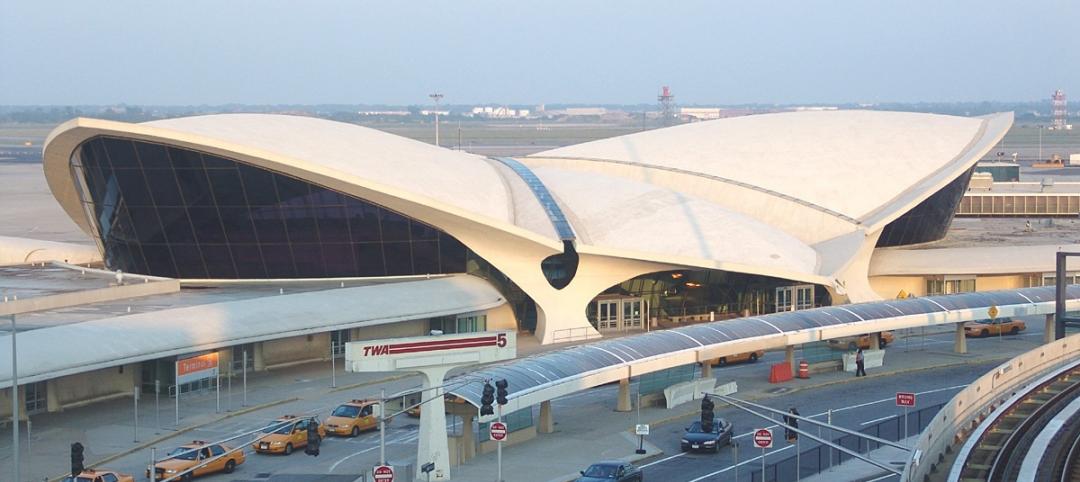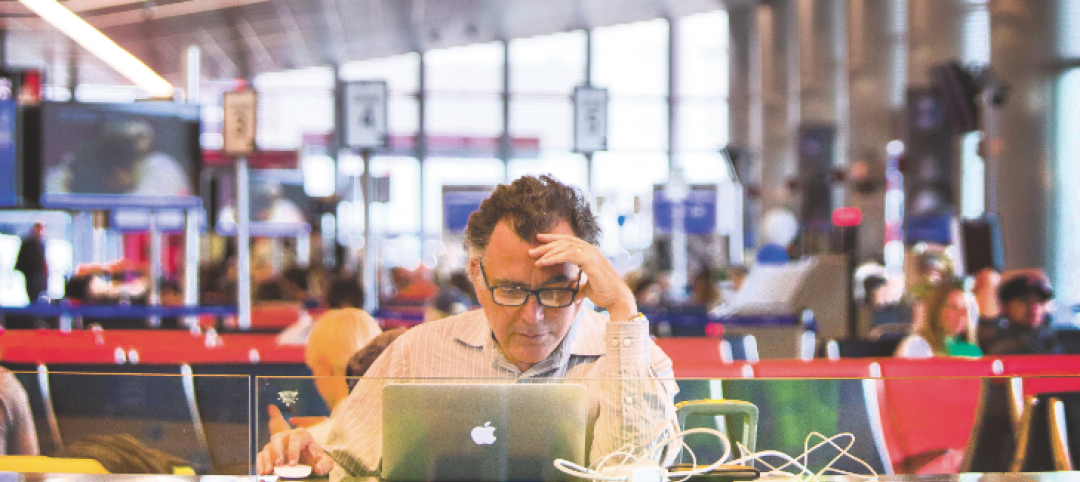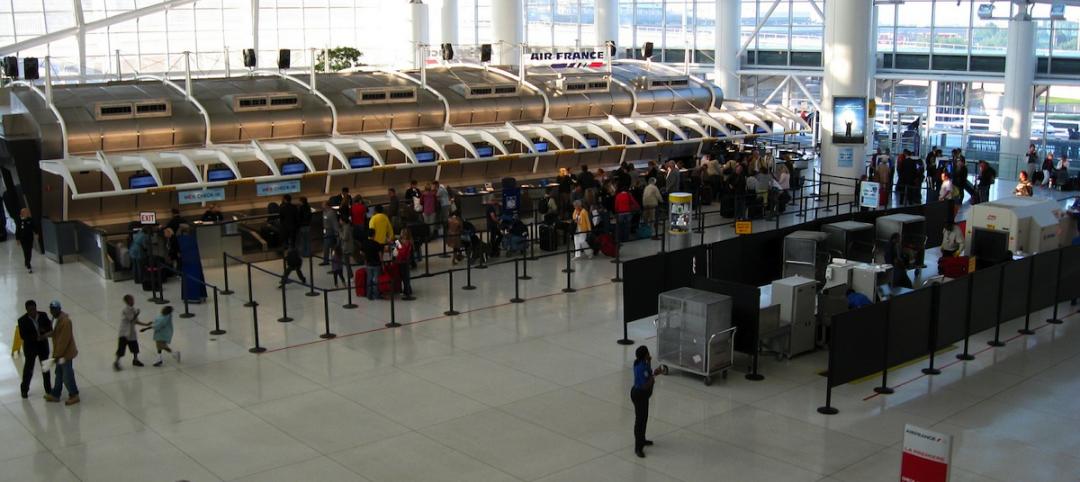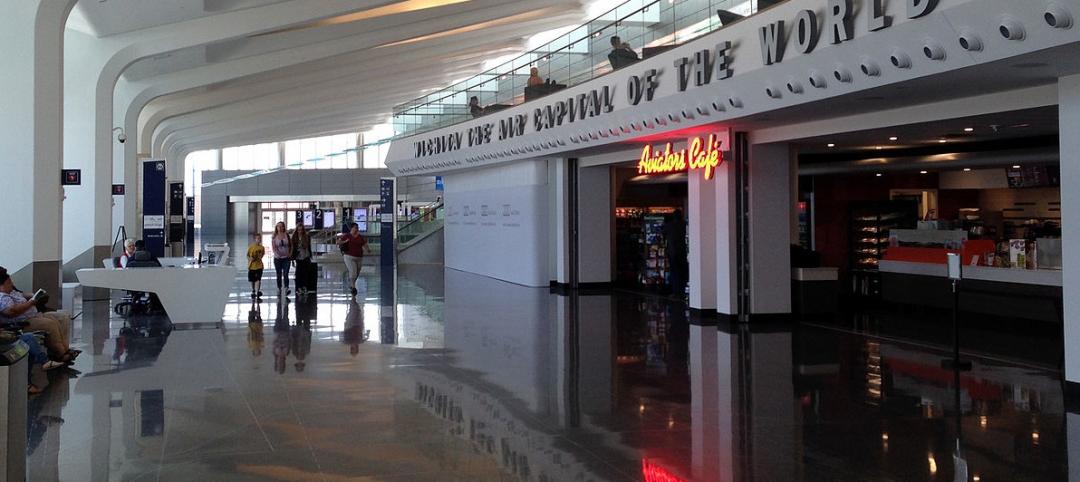The Skidmore, Owings & Merrill (SOM)-designed International Arrivals Facility (IAF) at Seattle-Tacoma International Airport has opened, replacing a 50-year-old arrival facility. It is noted as the most complex building project in SEA’s 70+ year history.
The new facility expands capacity and speeds up the international arrivals process. Efficiency for travelers was very important during the design process, and the new structure is about five times the size of the original, and is meant to improve passenger experience.
Improving Customer Experience
One of the main goals for the new arrival facility was to improve passenger experience, and provide a welcoming environment for travelers. The IAF immerses travelers in the landscape of the surrounding Pacific Northwest.
As passengers walk the soaring aerial walkway, they have 360-degree views of Mount Rainier, as well as the Olympic and Cascade mountain ranges. The walkway even spans across an active taxiline, which gives passengers the rare opportunity to watch planes pass underneath.
“This is an all-new welcome to our region and airport for an international traveler, and it's a dramatic improvement,” says Lance Lyttle, Managing Director of Sea–Tac. “Everything from the views out the windows, the iconic walkway, and the intuitiveness of the facility make this an exceptional customer experience.”
Grand Hall Artwork & Elements of the Northwest
The walkway connects to IAF’s Grand Hall, an expansive space with floor-to-ceiling windows. The hall is filled with artwork, including “Magnetic Anomaly,” a set of three kinetic artworks created by Ned Kahn, suspended overhead, and a colorful five-piece sculpture by Marela Zacarías, “Chalchiutlicue,” that floats above baggage claim carousels.
Other elements of Grand Hall are designed to reference the Pacific Northwest and its plant life, terrain, and topography. The hall features a terrazzo floor with local stones, and entry portals lined with Douglas fir.
Passengers depart the Passport Control area, alongside a small forest of evergreen trees, which culminates at ground level in a landscaped creek with native ferns and plantings nested between granite slabs.
The new and secure international corridor along the face of the existing A Concourse allows eight international wide-body aircraft gates direct access to the IAF, with dual use for domestic flights, bolstering the building’s future flexibility.
Project Statement:
Working with the Port of Seattle, Skidmore, Owings & Merrill (SOM) and Clark Construction Group led the design-build team for the 450,000-square-foot project which included: The Miller Hull Partnership, EHDD (Formerly Patano Studio), KPFF Consulting Engineers, Schlaich Bergermann Partner, Integrated Design Engineers (IDE), PAE Engineering, Magnusson Klemencic Associates, Stantec, Arup and Murase.
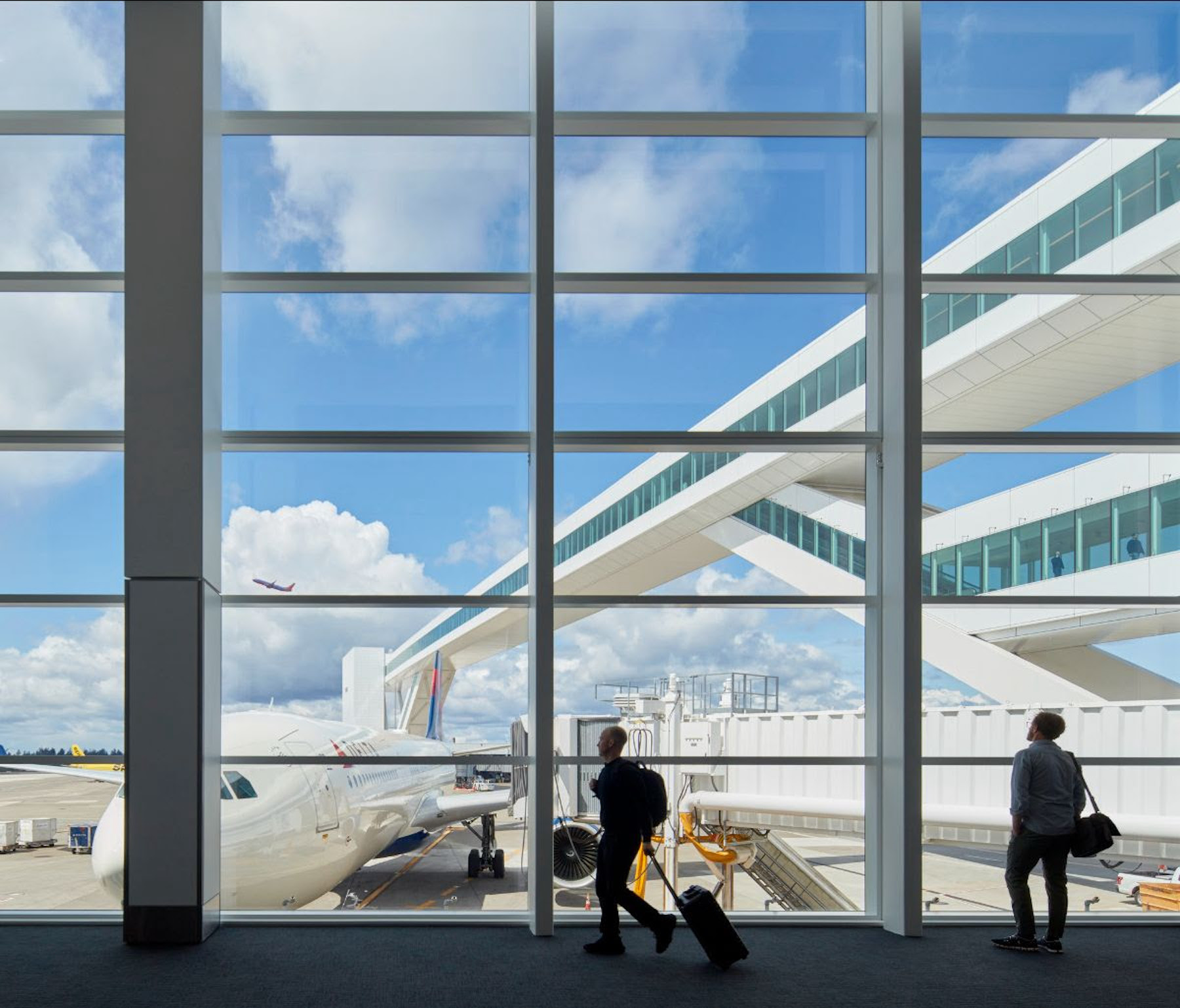
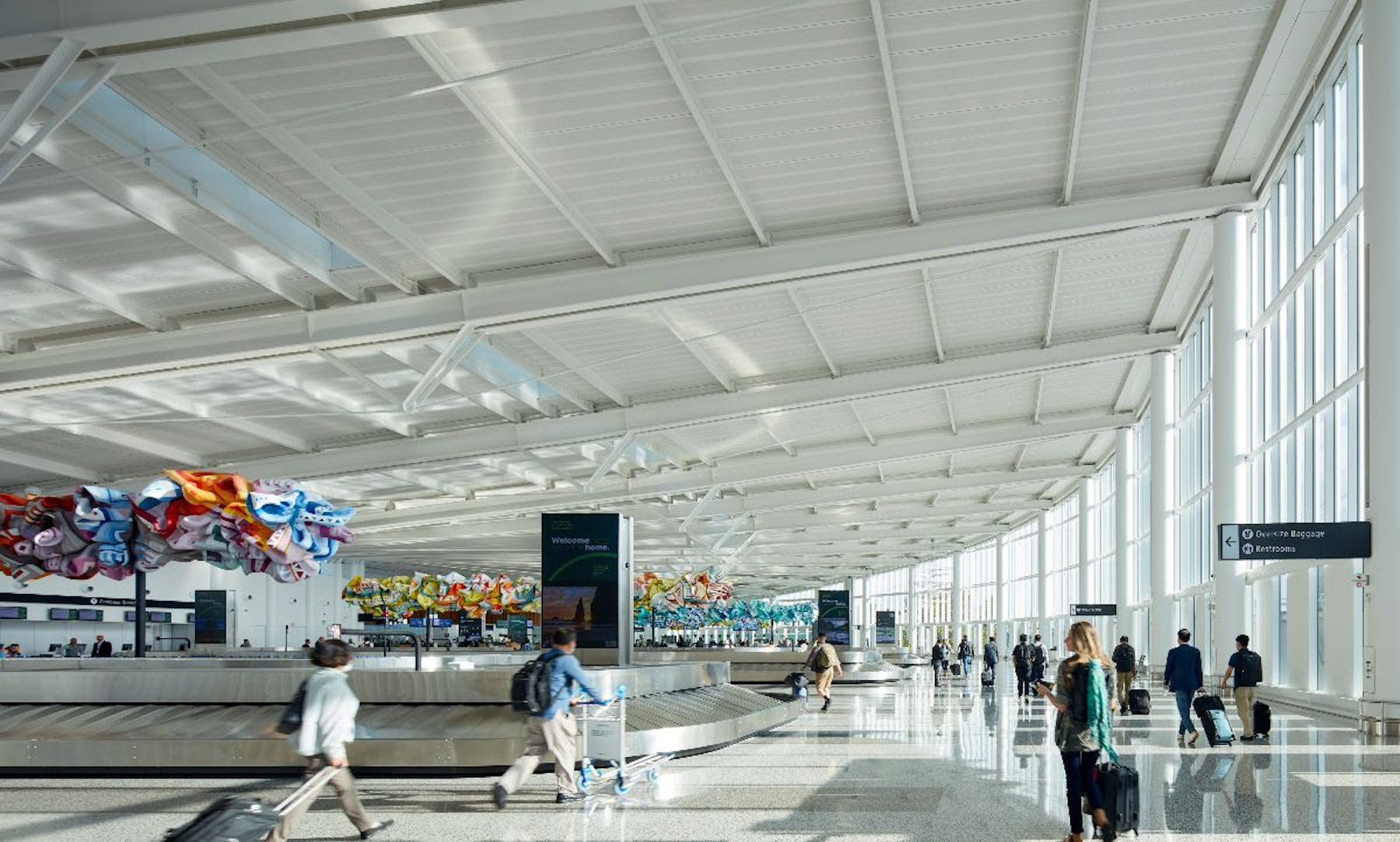
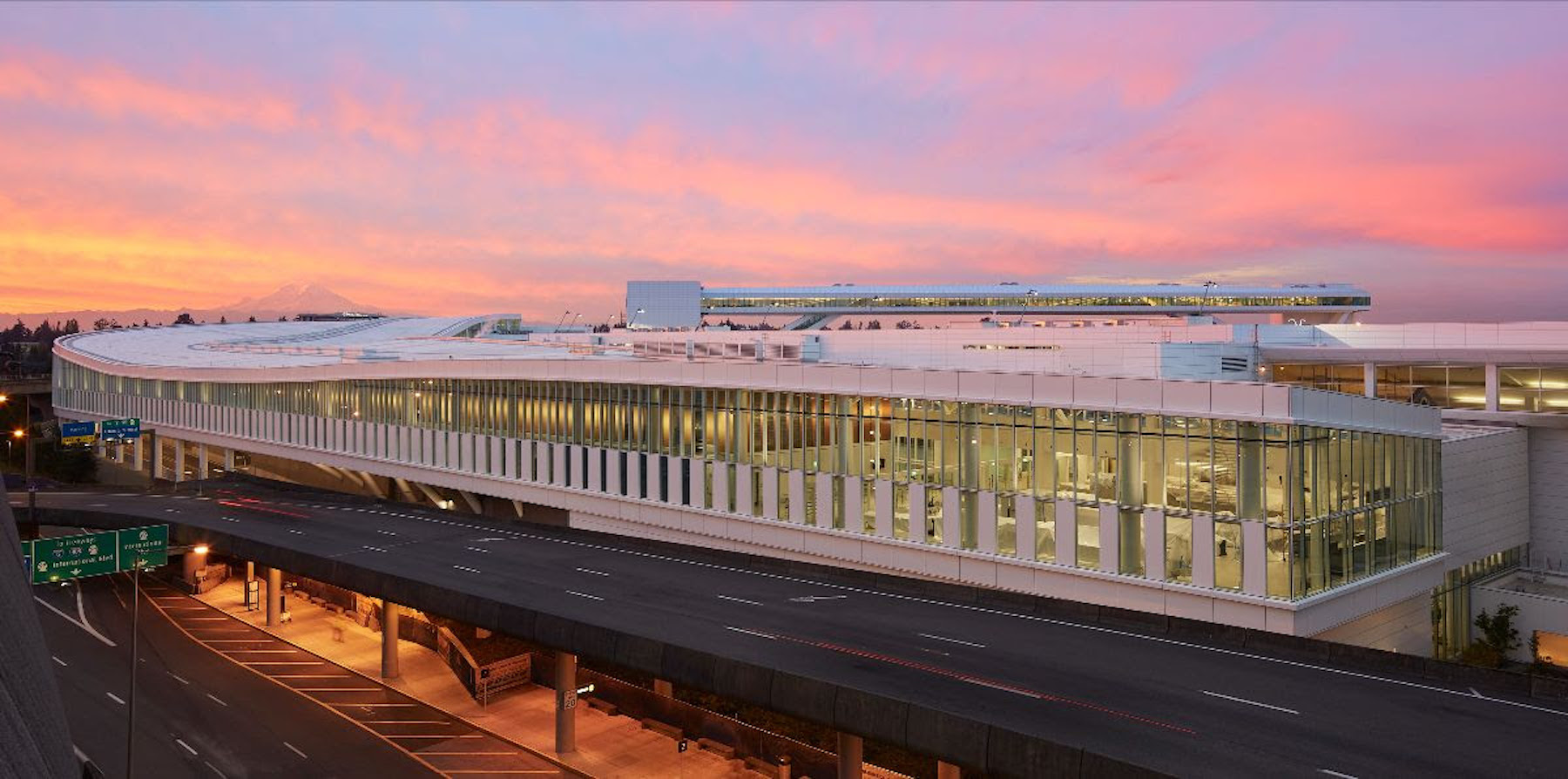
Related Stories
| Jan 14, 2016
How to succeed with EIFS: exterior insulation and finish systems
This AIA CES Discovery course discusses the six elements of an EIFS wall assembly; common EIFS failures and how to prevent them; and EIFS and sustainability.
Airports | Dec 13, 2015
Skybridge connects a terminal and airport on each side of the U.S.-Mexico border
Cross Border Xpress is the first phase of a larger development that will include hotels and offices.
Airports | Dec 4, 2015
National Fire Protection Association drops ban on glass boarding bridges
U.S. airports can now use more aesthetically pleasing building-to-plane links.
Airports | Oct 30, 2015
HOK designs new terminal for Salt Lake City International Airport
The $1.8 billion building will have floor-to-ceiling windows, a spacious central "Canyon," and energy-efficient systems. It will open in 2020.
Airports | Oct 5, 2015
Perkins+Will selected to design Istanbul’s 'Airport City'
The mixed-use development will be adjacent to the Istanbul New Airport, which is currently under construction.
Airports | Sep 30, 2015
Takeoff! 5 ways high-flyin' airports are designing for rapid growth
Nimble designs, and technology that humanizes the passenger experience, are letting airports concentrate on providing service and generating revenue.
Airports | Sep 23, 2015
JFK Airport's dormant TWA terminal will be reborn as a hotel
After 15 years of disuse, the Googie architecture-inspired TWA Flight Center at New York’s John F. Kennedy International Airport will be transformed into a hotel. Gizmodo reports that the city’s Port Authority chose a renovation proposal from Jet Blue this week.
Giants 400 | Sep 17, 2015
AIRPORT SECTOR GIANTS: KPF, Hensel Phelps, Jacobs top rankings of nation's largest airport terminal sector AEC firms
BD+C's rankings of the nation's largest airport terminal sector design and construction firms, as reported in the 2015 Giants 300 Report.
Airports | Aug 31, 2015
Surveys gauge users’ satisfaction with airports
Several surveys gauge passenger satisfaction with airports, as flyers and airlines weigh in on technology, security, and renovations.
Airports | Aug 31, 2015
Small and regional airports in a dogfight for survival
Small and regional airports are in a dogfight for survival. Airlines have either cut routes to non-hub markets, or don’t provide enough seating capacity to meet demand.


